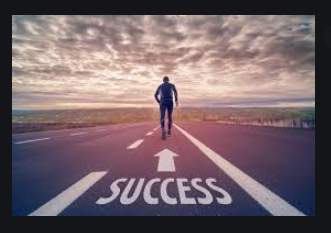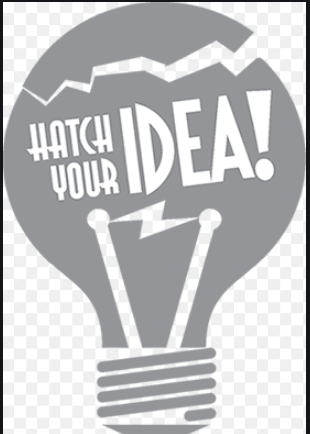According to a recent IBM CEO study of over 1,500 senior executives in dozens of countries, creativity is now the crucial factor for future success in an employee.

Business schools are rushing to fill the void in their curriculum with a wide array of courses and minor adjustments to their pedagogy.
While many are doing their best to meet this unmeant need, business schools are designed to encourage quantitative critical thinking: pricing options, building brand maps, optimizing supply chains, and the like.
The effects of rising complexity call for CEOs and their teams to lead with bold creativity, connect with customers in imaginative ways, and design their operations for speed and flexibility to position their organizations for twenty-first-century success.
Let’s define creativity.
The creative process is the act of making new connections between old ideas or recognizing relationships between concepts.
Creative thinking is not about generating something new from a blank slate, but rather about taking what is already present and combining those bits and pieces in a way that has not been done previously.
While being creative isn’t easy, nearly all great ideas follow a similar creative process. In 1940, an advertising executive named James Webb Young published a short guide titled, A Technique for Producing Ideas.
Young believed the process of creative connection always occurred in five steps.
The Creative Process
Gather new material
At first, you learn. During this stage you focus on 1) learning specific material directly related to your task and 2) learning general material by becoming fascinated with a wide range of concepts.
Thoroughly work over the materials in your mind
During this stage, you examine what you have learned by looking at the facts from different angles and experimenting with fitting various ideas together.
Step away from the problem

Next, you put the problem completely out of your mind and go do something else that excites you and energizes you.
Let your idea return to you
At some point, but only after you have stopped thinking about it, your idea will come back to you with a flash of insight and renewed energy.

Listen to feedback
For any idea to succeed, you must release it out into the world, submit it to criticism, and adapt it as needed.
To be highly creative you first need the right creative mindset. Having the outlook, attitude, and beliefs that empower and support you to be as creative as you can. (
A creative mindset gives meaning and value to how you approach your life, creative endeavors, and pretty much everything you do. Having a mindset for creativity opens you up to opportunities and possibilities because you are able to relish the creative process and embrace innovative thinking.
Creativity is how we make our lives meaningful and by valuing your creativity, owning, and honoring it, you will move into a life that is purposeful, truthful and feels free. (http://www.awakencreativity.com/a-creative-mindset/)
Some of the characteristics of the Creativity Mindset include:
- Believes in One’s Own Creativity
- Embraces Curiosity
- Suspends Judgement – Silences the Inner Critic
- Tolerates Ambiguity
- Persists Even When Confronted with Skepticism & Rejection
- Taps Into Childlike Imagination; a Child’s Sense of Wonder
Here are four ways you can nurture creativity:
Chase Your Curiosities
“Curiosity pleases me,” said physicist Alan Lightman in The Accidental Universe. “It evokes . . . a readiness to find strange and singular what surrounds us; a certain restlessness to break up our familiarities.”
Creative breakthroughs happen not on a singular path, but at the intersection of multiple domains, cross-pollinating ideas and concepts that are seemingly unrelated.

Avoid the self-sabotage of immediately labeling an idea or a curiosity as bad. Put it through the gauntlet first: ask your team for feedback and execute the idea. The only way you’ll know if it’s working is if you ship.
Break Out
In her book On Looking: Eleven Walks with Expert Eyes, cognitive scientist Alexandra Horowitz describes how she walked around her local city block with various professionals.
Each noticed something different based on his or her expertise: the geologist noticed all types of different stones in buildings and sidewalks, and the typography expert pointed out all the surrounding words.
The bias of our perspective, Horowitz says, is rooted in our expertise; it influences the way we see the world. “The psychiatrist sees symptoms of diagnosable conditions in everyone from the grocery checkout cashier to his spouse; the economist views the simple buying of a cup of coffee as an example of a macroeconomic phenomenon.”
This insight made me realize that it’s important to step out of my own skillset from time to time.
Step into the worlds of your teammates and study their processes. For example, looking over the shoulder of our design team helps me understand their methodology and, in turn, provides insights on what I can tinker with to make the whole process—my creative work included—better.
Be Okay With Imperfect
Plato once theorized that all things are produced by nature, chance, or art. The most beautiful and greatest is done by nature or chance; the least and most imperfect is art.
Does that bother you?
It drives me mad. Any creative takes his or her work personally. It is emotional labor based on our experiences and the way we see the world (and the way we want others to see the world).
The one thing that makes creative labor scary is the lack of reassurance. Today’s great essay maybe tomorrow’s greatest flop. No one knows what a perfect headline or website looks like.
But again, that’s merely one narrative, one way to view your work.
The lack of reassurance has another side to the coin: an opportunity to realize that your work is never complete, and knowing this, you learn something new about yourself and the domain every time you ship a project. As a creative, this should be energizing rather than debilitating.
The choice for how you want to see it is yours.
Find Your Flow
Anne Rice, the author of Interview With the Vampire, said about writing, “It’s always a search for the uninterrupted three- or four-hour stretch.” Uninterrupted time is not only valuable in writing, but in all kinds of work.
Mihaly Csikszentmihalyi championed this notion when he realized that this experience was felt and described in a similar manner no matter the person—religious mystics, scientists, artists, and ordinary working people describing their most rewarding work experiences.
Poet Mark Strand captured the idea of flow beautifully when interviewed by Csikszentmihalyi for his book referenced above:
[When] you’re right in the work, you lose your sense of time, you’re completely enraptured, you’re completely caught up in what you’re doing, and you’re sort of swayed by the possibilities you see in this work. . . . When you’re working on something and you’re working well, you have the feeling that there’s no other way of saying what you’re saying.
This ties into the necessity of understanding your schedule and daily rhythms. For example, all my writing gets done in the morning. If I can get into the flow for three or four hours, then my work is done; the latter half of the day can be spent reading and researching.
Finding your flow boils down to managing your daily schedule, finding a space in which you can do your work, shutting off your phone or other distractions, and enjoying the process.
The bottom line
Think of this example. Leonardo Da Vinci’s life as a creative thinker provides inspiration and lessons to learn for individuals and companies working in the creative sector.
The lessons above have a direct relationship with the design and innovation process inside companies. Also, they are linked with different creative thinking and problem-solving tools and methods which can be implemented to connect between different patterns to reach creative ideas and solutions. Do you see?
Very, very few of Da Vinci’s abilities are in the populace. But that doesn’t mean you can’t learn to be creative … it can be learned. Can you use these lessons to learn to see or see better?
Give it a try. Practice and be persistent. Stick with it, and over the long haul, you will see some good dividends.
